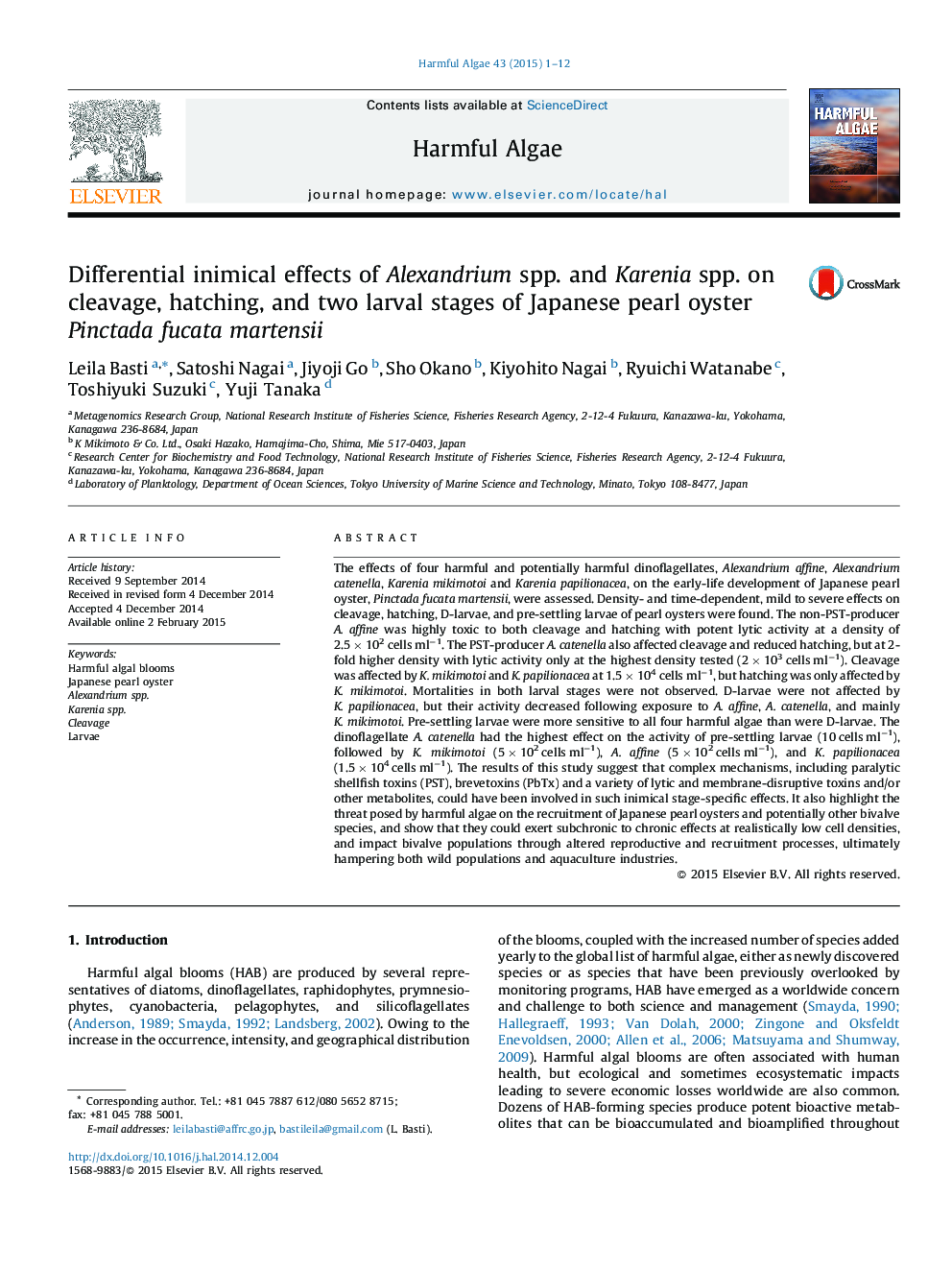| کد مقاله | کد نشریه | سال انتشار | مقاله انگلیسی | نسخه تمام متن |
|---|---|---|---|---|
| 4545277 | 1626928 | 2015 | 12 صفحه PDF | دانلود رایگان |

• Stage-specific inimical effects of Alexandrium spp. and Karenia spp.
• First report of effects of K. papilionacea and A. affine on a marine organism.
• Non-PST related lytic activity in A. affine, and less potent in A. catenella.
• Inimical effects of K. mikimotoi on cleavage and hatching of a bivalve.
• Higher sensitivity of pre-settling larvae to all four microalgae than D-larvae.
The effects of four harmful and potentially harmful dinoflagellates, Alexandrium affine, Alexandrium catenella, Karenia mikimotoi and Karenia papilionacea, on the early-life development of Japanese pearl oyster, Pinctada fucata martensii, were assessed. Density- and time-dependent, mild to severe effects on cleavage, hatching, D-larvae, and pre-settling larvae of pearl oysters were found. The non-PST-producer A. affine was highly toxic to both cleavage and hatching with potent lytic activity at a density of 2.5 × 102 cells ml−1. The PST-producer A. catenella also affected cleavage and reduced hatching, but at 2-fold higher density with lytic activity only at the highest density tested (2 × 103 cells ml−1). Cleavage was affected by K. mikimotoi and K. papilionacea at 1.5 × 104 cells ml−1, but hatching was only affected by K. mikimotoi. Mortalities in both larval stages were not observed. D-larvae were not affected by K. papilionacea, but their activity decreased following exposure to A. affine, A. catenella, and mainly K. mikimotoi. Pre-settling larvae were more sensitive to all four harmful algae than were D-larvae. The dinoflagellate A. catenella had the highest effect on the activity of pre-settling larvae (10 cells ml−1), followed by K. mikimotoi (5 × 102 cells ml−1), A. affine (5 × 102 cells ml−1), and K. papilionacea (1.5 × 104 cells ml−1). The results of this study suggest that complex mechanisms, including paralytic shellfish toxins (PST), brevetoxins (PbTx) and a variety of lytic and membrane-disruptive toxins and/or other metabolites, could have been involved in such inimical stage-specific effects. It also highlight the threat posed by harmful algae on the recruitment of Japanese pearl oysters and potentially other bivalve species, and show that they could exert subchronic to chronic effects at realistically low cell densities, and impact bivalve populations through altered reproductive and recruitment processes, ultimately hampering both wild populations and aquaculture industries.
Journal: Harmful Algae - Volume 43, March 2015, Pages 1–12